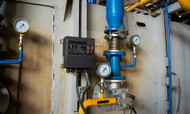A Quick Overview of Stand-Alone Fixed Gas Monitors
28th Mar 2024
Organizations and businesses have an array of choices when it comes to gas monitors. While each type safeguards the environment, stand-alone fixed gas monitors are particularly advantageous for continuous, location-specific gas detection. Read this quick overview of stand-alone fixed gas monitors to understand their working principle, the types of gases they detect, and how to choose the right monitor for your workplace.
Stand-Alone Fixed Gas Monitors
A stand-alone gas monitor is an independent device equipped to detect hazardous gases without the need to be connected to a larger safety system or network. Stand-alone detectors focus on specific hazards in localized areas without relying on a centralized control system. That means facilities can install stand-alone monitors without needing to modify existing networked systems substantially.
Fixed gas monitors are permanently installed for continuous monitoring in a specific location, whereas individuals can carry portable gas monitors to different locations. Fixed detectors help ensure the safety of environments such as industrial plants, laboratories, and any workspaces where toxic gases could pose a threat to human health or property. The strategically placed sensors analyze the air composition and alert personnel with visual and audible warnings when gas levels exceed safe thresholds.
Types of Gases Detected
Each gas monitor is equipped with sensors that detect one or more target gases. Each gas has unique properties and risks associated with it. Gas monitors enable tailored response strategies to mitigate associated dangers.
Stand-alone fixed gas monitors can detect the following gases and more:
- Carbon Monoxide (CO): A silent killer, carbon monoxide is odorless and colorless, making stand-alone monitors essential for its early detection.
- Methane (CH4): Highly combustible, methane poses significant explosion risks, particularly in confined industrial spaces.
- Hydrogen Sulfide (H2S): Known for its rotten egg smell, hydrogen sulfide is toxic and corrosive, necessitating constant monitoring in sectors like oil and gas.
- Nitrogen Dioxide (NO2): A byproduct of combustion processes, nitrogen dioxide is a potent irritant that can severely impact human health.
Choosing the Right Stand-Alone Fixed Gas Monitor
To choose the right stand-alone fixed gas monitor for your specific application, consider the following factors. Firstly, assess the types of gases that require detection in your environment, as different monitors detect different gases.
Secondly, the monitor should also have the correct detection range. This means that it should be able to accurately detect the gas at a concentration level that is deemed hazardous.
Thirdly, choose a device that can withstand the environmental conditions of the location it will monitor. These conditions can include extreme temperatures, high humidity, and exposure to chemicals or dust.
Finally, consider ease of use and maintenance. Features such as self-testing capabilities, a user-friendly interface, and remote monitoring options can significantly improve the device’s overall functionality and efficiency.
As this overview shows, stand-alone fixed gas monitors offer a vital protection measure against hazardous gases in various work environments, safeguarding both human life and property. Organizations can select the right devices for their sites by considering the types of gas they want to monitor, site conditions, and the devices’ user-friendly designs. For continuous gas detection in a single location, invest in a stand-alone fixed gas monitor.

